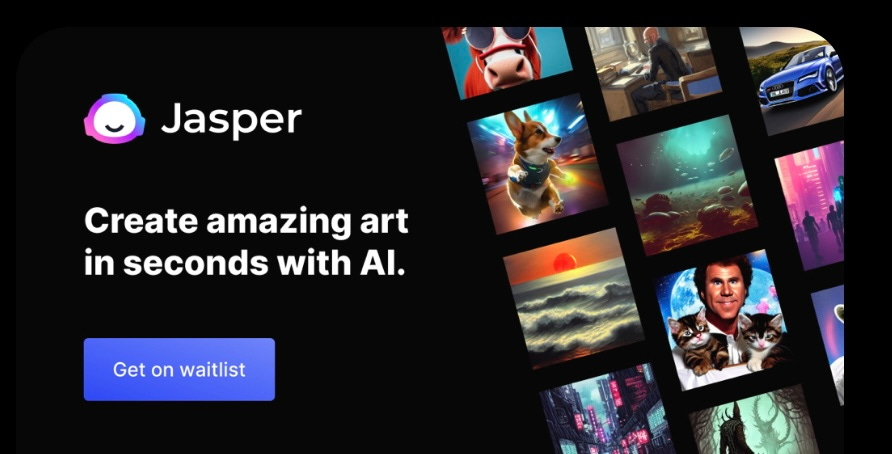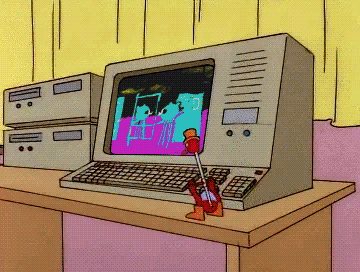Jeff Gordon - Everyone’s An Artist (1986)
Finally, art is easy. Thanks to recent advances in technology, creativity is more accessible and democratized than ever. Everyone is empowered to create anything they want. You don’t even need to leave the house, you can just upload to the internet and everyone sees your work. The struggle is over.
These ideas have circulated for decades, pushed by companies with something to sell and echoed an older generation who already made it. They’re now revived by purveyors of AI. I’d like to explore why they are so untrue.
Animation
Long ago I worked alongside classical animators who used pencil and paper, and never had to touch a computer. Up until that time, making any kind of controlled moving image was difficult and expensive, but suddenly, whoever could use software was able to make something an animator couldn't. Even a simple render would be painful to draw by hand.
In response, animators made all kinds of arguments against the computer: that it was too artificial to express emotion, that the outputs were soulless and lacked authenticity, that it took teams of people, that accidents never occurred, that it was too easy, and generally took the view that computers could never make real art.
These ideas still pervade the Art World, which will occasionally give a platform to computer art, but in a segregated context, to emphasize its separateness from the real thing.
Ultimately, I found doubts about the computer being a valid artistic tool encouraging, and worth disproving. It has always to some extent been rooted in fear and anxiety of its power, and driven by a lack of knowledge of what the limitations are—because the computer can do so much, it’s hard to tell what a person is responsible for.
Automation & Attention
A lot of early computer art took the form of tech demos, which were often flashy and complex, but ultimately boring. Once you’re exposed to the same effects, you cancel out whatever is being done automatically to find out what's being done intentionally.
It is generally true that automation clouds our ability to discern intention. The more the computer extrapolates, the harder it is to sense human input. To put it another way, the more a work becomes an expression of technology, the more attribution moves to the tool, the more we lose interest. Even though automation is the defining characteristic of the computer, we still want to sense a human being pushing against it.
With AI, we encounter a reality in which intention itself can be automated, as inputs are just as easily automated as outputs. The question is no longer whether a computer can make art, but whether a human is needed at all.
Attribution & Accidents
So far, there have never been tools which create so much apparent intention with so little control. AI art generators turn us into curators; closer to DJ’s than producers. Taking credit for its work can therefore feel fraudulent, because we are only partly responsible for what it does.
The parts of the creative process we’re not directly responsible for—accidents—are also not our intention, but we adopt them as such. We prize accidents because they emerge from outside our will and take us to destinations we wouldn’t otherwise go. The AI art process feels like a kind of accident curation.
Perhaps, as a tool, AI’s strength is offering an enormous "accident space": a dimension of plausible, potential variations on an intention. By contrast, the pen, chisel or violin bow have much smaller accident spaces, if moved a tiny degree off-target, the entire work falls apart—but with AI, you can throw a rock at the computer and get something interesting.
It’s reasonable to assume that the more granularity AI tools offer, the more skill will develop around their use and the more responsible we will be over their output. The process may involve exploring and manipulating this accident space; aligning intention with output—but will otherwise be like any other medium—a back and forth process of iteration, a dance where we take the lead, allowing its particular motions while keeping it from veering off course.
However, we are left with a conundrum, because in the end, human participation will always be indistinguishable from that of AI. If our input amounts to curatorial negations, those can easily be automated too. We will then be paying monthly for the privilege of automating ourselves. Luckily, everyone contributing to AI’s development also accelerates their own automation, and joins us in the race towards self-obsolescence.
Adaptation
Over time, it's likely that AI will flatten our value judgement of whatever it could produce. However much it delights us now, we will eventually become numb to what it makes. If this is the case, art will migrate into whatever automation is bad at: physical interaction, performance, direct sensory perception and so on.
If, on the other hand, we accept AI’s creations as equally valid, we become open to the possibility that it will produce greater art than any human ever could—more complex, profound and surprising than anything ever accomplished without it. We will then live in its shadow, feeding it but not really being in control of it.
In all likelihood, some version of the middle will occur: AI will undermine how we value digital media and make us more careful about what sources we trust. Audiences will seek human experiences alongside auto-generated ones, and artists will find ways of using (and being used by) AI in ever more spectacular ways. It has been historically true that the potential of tools are never really known by their inventors, but discovered by artists over time. We will always seek whatever they cannot yet do.
Acceleration / Annihilation
The blank page / new file will never be less intimidating, and whatever is worth doing will always involve effort. Automation will increase but the process will never get any easier, because art is not a fixed goal, but an ever-receding horizon of possibility. Whenever something becomes easy it quickly moves on. This has always been the case.
The long term adaptive response to AI is likely to lead to unimaginably beautiful art and powerful affirmations of humanity, as well as widespread job disruption and the atrophying of fundamental human skills. It’s possible that when we stop drawing and writing, we also stop seeing and thinking.
While AI will not make art easier, it does prompt us to clarify what we mean by it, and we may want to do so wherever it cannot look.






